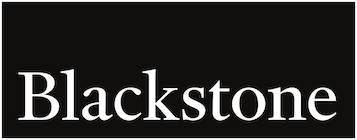A Mid-Cycle’s Pause
By Joe Zidle, Chief Investment Strategist
with Taylor Becker, Research Analyst
When we put together the 10 Surprises late last year, we presented an out-of-consensus view on the remaining duration of this economic expansion. At the time, the prevailing wisdom was that, after nearly 10 years, the US economic cycle was in danger of rolling over. The Federal Reserve had just raised interest rates. Equity and credit markets were in free-fall. Economists forecasted interest rate cuts at the end of 2019 and eyed a recession in early 2020.
However, we wrote that a recession would not occur until 2021, at the earliest. The correction at the end of 2018 was actually just a pause in the cycle. Today, that still might be our most out-of-consensus view, though client pushback on our bearish views about gold and a higher 10-year Treasury yield makes them close runners-up for the title of Most Contrarian. Our position remains that the factors that end an economic cycle are not yet present. The indicators with the best track records of predicting recessions—which have two-year lead times on average—aren’t flashing their traditional warnings either.
Historically, expansions end due to excesses of some kind—whether they be financial or in the real economy—or with the Fed tightening too much. The best measures of excess to watch are the yield curve, average hourly earnings and leading economic indicators (LEIs). But these measures are not showing evidence of trouble yet. The Fed has struck a more dovish tone, the yield curve is upwardly sloping, average hourly earnings growth remains below 4% per annum (the pain point at which the Fed has typically raised rates to prevent inflation) and LEIs have only just now rolled over.
For a recession to occur without triggering any of the usual warnings would mean something is making this economic cycle different from all prior cycles. That brings to mind an old saying that the four most expensive words in the English language are “this time is different.” In our view, that warning applies today as much as ever.
Central Banks: Drivers of the Next Stage of Growth Our focus is on the factors that could drive growth in the next leg of this cycle. Notably, a continued global economic expansion and bull markets in equity and credit risk assets may be propelled by forces that few would have predicted as recently as January.
For one, central bank policy in the US, Europe and China is rapidly swinging back into easing mode. The global monetary base contracted 8% in 2018 due to tightening around the world. According to analysts at Ned Davis Research, 56% of central banks raised rates in 2018, up from 20% in 2017. Not since 2011 has the world seen so much coordinated tightening. And it showed: equity and credit markets suffered in 2018 just as they did in 2011. The 4.4% loss for the S&P 500® represents just the 13th loss for the full calendar year since 1958. Eight of those 13 losses occurred either immediately prior to or during a recession.
Some of 2018’s tightening effects appear set to reverse in 2019. In the US, the Fed will likely be on hold after hiking four times last year. Perhaps, just as important, the Fed will end or at least significantly slow its balance sheet run-off. This is notable because the balance sheet reduction could have the equivalent economic impact of one to two interest rate hikes, according to some estimates. A larger balance sheet would result in an earlier-than-expected end to the Fed’s quantitative tightening program and this would be bullish for risk assets.
In Europe, the European Central Bank (ECB) may soon need to restart quantitative easing after ending its program in December. Peripheral European countries might grow fast enough to keep the broader Eurozone out of a recession, but Europe’s Big Three economies will almost certainly contract. Recessionary conditions are evident in Italy, and France and Germany are likely to fall into recession this year as well. Many leading indicators are at levels not seen since 2012, when the ECB committed to doing “whatever it takes” to save the Eurozone. As in 2012, we expect Europe’s central bankers to step in to soften the economic landing.
In Asia, the People’s Bank of China (PBOC) has already injected some ¥2.2 trillion into the Chinese economy through various forms of stimulus. As the effects of the US-China trade dispute drag on the Chinese economy, the PBOC will continue to use monetary stimulus to keep the economy above 6% growth.
Risks to This Cycle Of course, adverse trends or developments could arise that would end this expansion prematurely. For example, investors will have to balance the bullish forces of central bank stimulus against falling corporate profits. Currently, earnings growth for the S&P 500 is projected to turn negative in the first quarter, with yearly growth in the low-mid single digits for 2019. We don’t think an earnings recession is imminent, as companies tend to guide analysts lower at the start of the quarter so they can beat.
Even if a corporate profits recession were to hit in 2019, it would not necessarily spell the end of this economic expansion. Since World War II, the average economic expansion has lasted nearly five years, whereas corporate profits rise for around 2.5 years on average before turning negative.(1) Over the same period, 25% of earnings recessions, defined as at least two consecutive quarters of negative earnings growth, occurred in the absence of an economic recession.
In short, corporate profits ebb and flow with a greater degree of periodicity than economic cycles, and profits growth can contract briefly without resulting in an economic recession. A profits recession would, however, affect equity market performance. S&P 500 returns are demonstrably lower during periods when profits growth is negative. In recent periods of positive earnings growth, equities outperformed by an annualized 7% relative to periods of negative earnings growth.(2)
Of all the potential risks to this cycle, the US trade war with China tops the list. The longer the dispute goes on, the greater the toll it will take on growth. It’s already starting to stretch corporate supply chains. Blackstone’s internal surveys of some of our portfolio company CEOs indicate that input costs are rising relative to prior quarters.(3)Even compared to 3Q’18, tariffs are now higher on the list of CEOs’ top concerns.
If trade conditions do not ease and business confidence continues to fall, overall US growth could suffer as businesses around the country see input prices rise, curtail hiring plans and stop investing for growth. There is a strong correlation between small business confidence and US GDP growth, as the following chart indicates.
Small Business Optimism and GDP Growth
Policy uncertainty remains an acute risk as well. In Europe, the UK careening out of the European Union without a deal would result in a huge hit to the British and European economies. The specter of a no-deal Brexit continues to undermine confidence, and data show that it has halted investment. In the two decades prior to Brexit, business investment had grown by an average of 2% per annum, even including the declines during the past two recessions.(4) Since the Brexit vote, it has declined by 1% per annum.(3)
The US faces domestic policy uncertainty of its own, particularly with anti-business sentiment forming ahead of the 2020 election. This can be seen in the proposals, from both sides of the aisle, to restrict corporate buybacks and impose taxes that would likely stifle investment. The pressure put on Amazon to cancel its plans for a second headquarters in Queens, New York is another example. In addition, dysfunction in Washington, including the recent government shutdown, has affected consumer and business confidence. The shutdown likely distorted recent economic data releases too. For example, the government’s December retail sales report showed the weakest retail sales since 2009, yet just days later Walmart reported its strongest holiday sales growth in a decade.
Many of the downside risks may already be priced into the market. Investors have been remarkably bearish throughout this cycle. That could be due to recency bias, the phenomenon whereby a recent event clouds judgment and causes people to ignore earlier trends. In the wake of the Great Recession, it seems many investors have extrapolated the pain they experienced and projected it into the future, not wanting to be burned again.
This bull market may be the longest in history, but it may also be the least-loved. From 2009 through January 2019, US equity ETFs and mutual funds experienced net outflows. Compare that to net inflows of more than $700 billion and $600 billion in the 1994–1999 and 2000–2007 expansions, respectively.(5)
One benefit of the relative investor bearishness up to this point has been the absence of the euphoric sentiment that typically precedes the end of cycles. We don’t deny that some measures of sentiment, such as surveys, show bullishness increasing. But we prefer flow data because they represent actual asset allocation decisions (i.e., people putting their money where their mouth is).
Positioning for a Sustained Expansion If some of the major risks discussed above are eased, investors may finally be convinced that this bull market is real, resulting in positive flows and a further rally in equities. Unlike current investor sentiment, we do not believe that it is time to position portfolios for a recession. Markets may be at risk for a pullback in the short term simply because the 11% gain in the S&P 500 year-to-date is not sustainable. But rather than a source of panic, bouts of weakness should be considered potential buying opportunities in equity and credit risk assets.
Emerging markets and the US remain our two favorite market segments. The energy, technology, materials and industrials sectors are attractively valued; each sector is below its trailing 12-month P/E ratio and well below the average of the past three decades.(6) In credit, leveraged loans and high yield should outperform investment grade and sovereigns.
We believe there are good reasons to be bullish on equity and credit risk, continued US economic growth and a renewed global expansion. We aren’t wearing rose-colored glasses; when the data change, so will we. But something will have to go wrong to end this cycle—it will not die of old age.
* * * * *
1. Source: Bureau of Economic Analysis, National Bureau of Economic Research and Blackstone. Economic expansions are based on NBER definitions. Corporate profits are based on the year-over-year change in corporate profits after tax as measured by the BEA.
2. Source: Bloomberg and Blackstone, from 1/1/1980 through 11/30/2016. Based on monthly price returns.
3. Note: Blackstone data based on surveys of a subset of Blackstone’s corporate private equity portfolio companies, as of 12/31/2018.
4. Source: U.K. Office for National Statistics, as of 2/11/2019.
5. Source: Morningstar Direct, as of 1/31/2019. Represents the estimated net flows for US Equity open-end funds and ETFs for the periods 1/1/1994 through 12/31/1999, 1/1/2000 through 2/31/2007 and 1/1/2009 through 1/31/2019.
6. Source: Bloomberg and Blackstone, from 1/1/1990 through 1/31/2019. Based on month-end P/E ratios.



